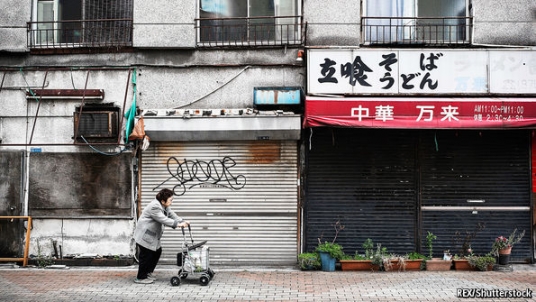Desperately seeking young people www.economist.com

MIEKO TERADA moved to Tama in 1976, at about the same time as everyone else there. Back then, the fast-growing city in Tokyos suburban fringe was busy with young married couples and children. These days, however, the strip of shops where Ms Terada runs a café is deathly quiet, her clientele elderly. The people of Tama and their apartments are all growing old and decrepit at the same time, she says.
In the mid-1990s Japan had a smaller proportion of over-65s than Britain or Germany. Thanks to an ultra-low birth rate, admirable longevity and a stingy immigration policy, it is now by far the oldest country in the OECD. And senescence is spreading to new areas. Many rural Japanese villages have been old for years, because young people have left them for cities. Now the suburbs are greying, too.
who knows maybe one day the head office of Akihabara.Tokyo will be located in a small rural Japanese town :D
comment

Several small towns and villages are using creative ideas to attract young families and small businesses to move to the countryside. Kamiyama city's Green Valley initiative is one of them.
Mishima's offer of free cows and paying for dates is an interesting one :o)
Echigo Tsumari Art Field and its Arts Triennial exhibitions show a unique idea for attracting people to a rural area and keeping the rural economy going.
Several villages in Shikoku are offering high speed internet connections at low rates to get small companies to move software development to those places. Given the communication skills of some developers here, there is no difference whether they work in Akihabara or in hermitages :p.
I used to take young volunteers to plant rice and shovel snow in rural Japan. Some day, I might be able to move there and form a small IT business. who knows!
comment